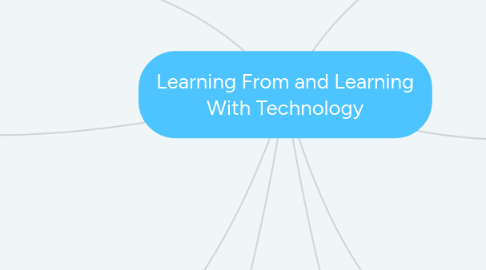Learning From and Learning With Technology
by Monica Kimbrough

1. Factors Essential to Teachers' Integration of Technolgoy
1.1. Administrative and technical support
1.2. Adequate resources
1.3. Teacher leadership
2. Technology as Information Resource
2.1. Students must develop skills to understand, synthesize, and employ information gained through technology - the "new literacies"
2.2. Students must be taught to evaluate web content based on reliability, authorship, and purpose
2.3. Students need both technical skills and critical and creative thinking skills
3. Technology as Interactive Learning Tool
3.1. Digital game-based learning
3.1.1. Components
3.1.1.1. Preinstruction - curriculum introduced as starting point for game play
3.1.1.2. Coinstruction - Curriculum taught simultaneously with game play
3.1.1.3. Postinstruction - Game play is aligned with curriculum material after play is completed
3.2. Flipped classrooms - teacher posts lessons for students to watch independently for homework and then class time is used for feedback and differentiated support
3.3. Online gifted programs - university and distance learning
4. Technology as Production Tool
4.1. Productivity tools and cloud computing - Microsoft Office, Google Docs
4.2. Video and sound editing - GarageBand, Audacity
4.3. Programming - Scratch, Alice, Codeacademy
5. Advantages for Gifted Learners
5.1. Access to more advanced content
5.2. Contexts for developing critical and creative thinking skills
5.3. Tools for constructing and sharing sophisticated products
6. Technology Evolution in Education
6.1. 1980s - opportunity to automate print, mostly self-correcting worksheets - learning from technology
6.2. 1990s - shift to productivity tool; use of Internet; production tools; data collection - learning with technology
6.3. Current - "Data-Driven Virtual Learning" - technology used to create unique and customized learning
7. Technology as Communication Tool
7.1. Videoconferencing - Skype; Google Hangouts
7.2. Social networking
7.3. Online publishing
7.4. Telementoring
8. Tools for Classroom Instruction and Interaction
8.1. SMART Technologies and Promethean
8.2. Assistive technology
8.3. Podcasting
8.4. E-books
8.5. Assessment



